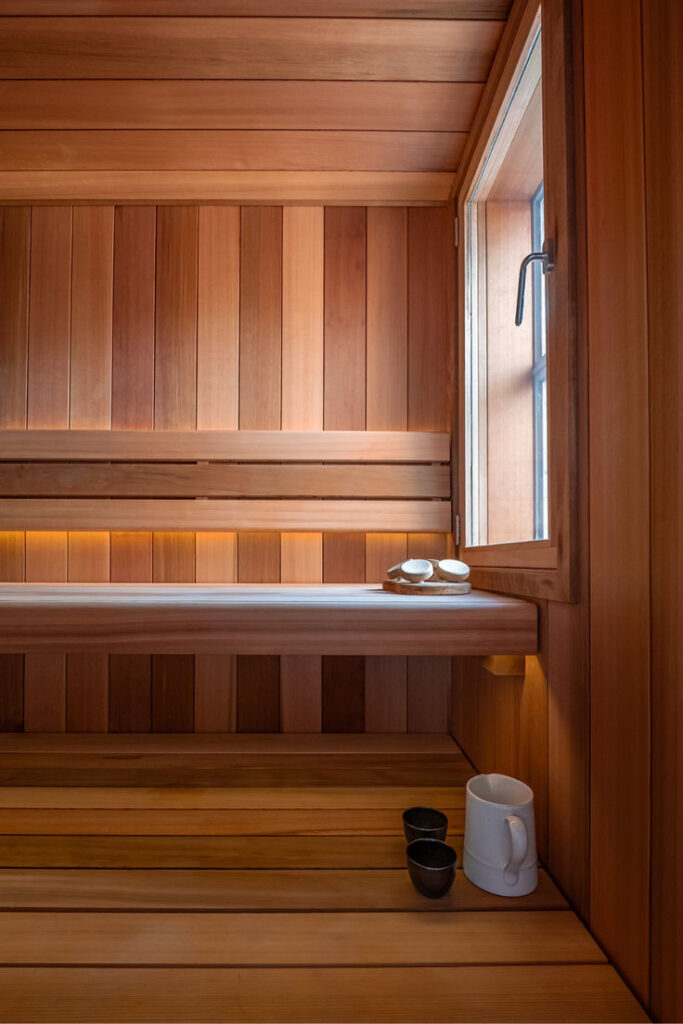Introduction Home Sauna.
A home sauna is a great addition to any house, offering relaxation, health benefits, and increased property value. Whether you’re planning an indoor or outdoor sauna, careful planning is essential to ensure a safe, efficient, and enjoyable experience.
In this guide, we’ll explore the key considerations when building a home sauna, including location, materials, heating options, ventilation, insulation, and maintenance.
1. Choosing the Right Location
The first step in building a home sauna is selecting the right location. Saunas can be installed indoors or outdoors, and each option has its advantages:
- Indoor Sauna: Convenient access, protection from weather, and can be placed in a bathroom, basement, or spare room.
- Outdoor Sauna: Offers a natural retreat, can be larger, and provides an authentic experience, especially in colder climates.
Ensure the chosen location has adequate space and structural support for the sauna installation.

2. Selecting the Right Sauna Type
There are different types of home saunas, each with unique heating mechanisms:
- Traditional Finnish Sauna: Uses a wood-burning or electric stove with heated rocks to create steam and high temperatures.
- Infrared Sauna: Uses infrared heaters to warm the body directly, operating at lower temperatures while still providing health benefits.
- Steam Sauna: Incorporates a steam generator for a humid sauna experience.
Your choice depends on personal preferences, available space, and budget.
3. Choosing High-Quality Materials
The materials used in your home sauna affect its durability and efficiency. The best sauna woods include:
- Cedar: Naturally resistant to moisture and decay, emits a pleasant aroma.
- Hemlock: Affordable, durable, and does not release strong odors.
- Aspen: Non-allergenic and ideal for those sensitive to scents.
For flooring, use non-slip and heat-resistant materials, such as treated wood or stone.

4. Heating Options for Your Sauna
The heat source is a crucial aspect of any sauna. Common heating options include:
- Wood-Burning Stove: Provides an authentic experience but requires ventilation and fuel storage.
- Electric Sauna Heater: Easy to use and install, with adjustable temperature controls.
- Infrared Heaters: Energy-efficient and quick to heat, ideal for modern home setups.
Consider energy efficiency, running costs, and maintenance when selecting a heating system.
5. Proper Ventilation and Insulation
Good ventilation ensures fresh air circulation and prevents moisture buildup, reducing the risk of mold and structural damage. Key components of ventilation include:
- Air intake: Positioned near the sauna heater.
- Exhaust vent: Placed on the opposite side to allow airflow.
Effective insulation is essential to maintain heat efficiency. Use foil vapor barriers and high-quality insulation materials to retain warmth and prevent heat loss.

6. Safety and Electrical Considerations
Safety should be a priority when installing a home sauna:
- Ensure electrical components meet local building codes.
- Use a licensed electrician for wiring and heater installation.
- Install heat-resistant and waterproof lighting fixtures.
- Maintain a safe sauna temperature range (150°F – 195°F) to prevent overheating.
7. Ongoing Maintenance and Care
To keep your sauna in top condition, follow these maintenance tips:
- Regular Cleaning: Wipe down surfaces, clean the heater, and allow ventilation after each use.
- Inspect for Moisture Damage: Check for mold, mildew, or warping.
- Replace Heater Elements: Over time, heating elements may require replacement for optimal performance.
Conclusion Building a Home Sauna.
Building a home sauna requires careful planning to ensure comfort, efficiency, and longevity. By considering factors such as location, materials, heating systems, ventilation, and safety, you can create the perfect sauna experience at home.
If you’re ready to install a sauna in your home, consult a professional to ensure a seamless and safe setup.
